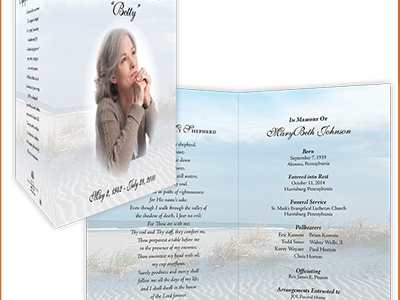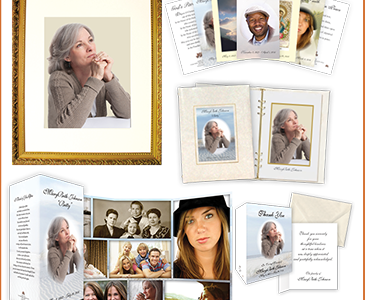The Journey Through Grief:
The Mourner’s Six “Reconciliation Needs”
by Alan D. Wolfelt, Ph.D.
The death of someone loved changes our lives forever. And the movement from the “before” to the “after” is almost always a long, painful journey. From my own experiences with loss as well as those of the thousands of grieving people I have worked with over the years, I have learned that if we are to heal we cannot skirt the outside edges of our grief. Instead, we must journey all through it, sometimes meandering the side roads, sometimes plowing directly into its raw center.
I have also learned that the journey requires mourning. There is an important difference, you see. Grief is what you think and feel on the inside after someone you love dies. Mourning is the outward expression of those thoughts and feelings. To mourn is to be an active participant in our grief journeys. We all grieve when someone we love dies, but if we are to heal, we must also mourn.
There are six “yield signs” you are likely to encounter on your journey through grief – what I call the “reconciliation needs of mourning.” For while your grief journey will be an intensely personal, unique experience, all mourners must yield to this set of basic human needs if they are to heal.
Need 1. Acknowledging the reality of the death.
This first need of mourning involves gently confronting the reality that someone you care about will never physically come back into your life again.
Whether the death was sudden or anticipated, acknowledging the full reality of the loss may occur over weeks and months. To survive, you may try to push away the reality of the death at times. You may discover yourself replaying events surrounding the death and confronting memories, both good and bad. This replay is a vital part of this need of mourning. It’s as if each time you talk it out, the event is a little more real.
Remember – this first need of mourning, like the other five that follow, may intermittently require your attention for months. Be patient and compassionate with yourself as you work on each of them.
Need 2. Embracing the pain of the loss.
This need of mourning requires us to embrace the pain of our loss – something we naturally don’t want to do. It is easier to avoid, repress or deny the pain of grief than it is to confront it, yet it is in confronting our pain that we learn to reconcile ourselves to it.
You will probably discover that you need to “dose” yourself in embracing your pain. In other words, you cannot (nor should you try to) overload yourself with the hurt all at one time. Sometimes you may need to distract yourself from the pain of death, while at other times you will need to create a safe place to move toward it.
Unfortunately, our culture tends to encourage the denial of pain. If you openly express your feelings of grief, misinformed friends may advise you to “carry on” or “keep your chin up.” If, on the other hand, you remain “strong” and “in control,” you may be congratulated for “doing well” with your grief. Actually, doing well with your grief means becoming well acquainted with your pain.
Need 3. Remembering the person who died.
Do you have any kind of relationship with someone when they die? Of course. You have a relationship of memory. Precious memories, dreams reflecting the significance of the relationship and objects that link you to the person who died (such as photos, souvenirs etc.) are examples of some of the things that give testimony to a different form of a continued relationship. This need of mourning involves allowing and encouraging yourself to pursue this relationship.
But some people may try to take your memories away. Trying to be helpful, they encourage you to take down all the photos of the person who died. They tell you to keep busy or even to move out of your house. But in my experience, remembering the past makes hoping for the future possible. Your future will become open to new experiences only to the extent that you embrace the past.
Need 4. Developing a new self-identity.
Part of your self-identity comes from the relationships you have with other people. When someone with whom you have a relationship dies, your self-identity, or the way you see yourself, naturally changes.
You may have gone from being a “wife” or “husband” to a “widow” or “widower.” You may have gone from being a “parent” to a “bereaved parent.” The way you define yourself and the way society defines you is changed.
A death often requires you to take on new roles that had been filled by the person who died. After all, someone still has to take out the garbage, someone still has to buy the groceries. You confront your changed identity every time you do something that used to be done by the person who died. This can be very hard work and can leave you feeling very drained.
You may occasionally feel child-like as you struggle with your changing identity. You may feel a temporarily heightened dependence on others as well as feelings of helplessness, frustration, inadequacy and fear.
Many people discover that as they work on this need, they ultimately discover some positive aspects of their changed self-identity. You may develop a renewed confidence in yourself, for example. You may develop a more caring, kind and sensitive part of yourself. You may develop an assertive part of your identity that empowers you to go on living even though you continue to feel a sense of loss.
Need 5. Searching for meaning.
When someone you love dies, you naturally question the meaning and purpose of life. You probably will question your philosophy of life and explore religious and spiritual values as you work on this need. You may discover yourself searching for meaning in your continued living as you ask “How?” and “Why” questions.
“How could God let this happen?” “Why did this happen now, in this way?” The death reminds you of your lack of control. It can leave you feeling powerless.
The person who died was a part of you. This death means you mourn a loss not only outside of yourself, but inside of yourself as well. At times, overwhelming sadness and loneliness may be your constant companions. You may feel that when this person died, part of you died with him or her. And now you are faced with finding some meaning in going on with your life even though you may often feel so empty.
This death also calls for you to confront your own spirituality. You may doubt your faith and have spiritual conflicts and questions racing through your head and heart. This is normal and part of your journey toward renewed living.
Need 6. Receiving ongoing support from others.
The quality and quantity of understanding support you get during your grief journey will have a major influence on your capacity to heal. You cannot – nor should you try to – do this alone. Drawing on the experiences and encouragement of friends, fellow mourners or professional counselors is not a weakness but a healthy human need. And because mourning is a process that takes place over time, this support must be available months and even years after the death of someone in your life.
Unfortunately, because our society places so much value on the ability to “carry on,” “keep your chin up” and “keep busy,” many mourners are abandoned shortly after the event of the death. “It’s over and done with” and “It’s time to get on with your life” are the types of messages directed at mourners that still dominate. Obviously, these messages encourage you to deny or repress your grief rather than express it.
To be truly helpful, the people in your support system must appreciate the impact this death has had on you. They must understand that in order to heal, you must be allowed – even encouraged – to mourn long after the death. And they must encourage you to see mourning not as an enemy to be vanquished but as a necessity to be experienced as a result of having loved.
Reconciling your grief
You may have heard – indeed you may believe – that your grief journey’s end will come when you resolve, or recover from, your grief. But your journey will never end. People do not “get over” grief.
Reconciliation is a term I find more appropriate for what occurs as the mourner works to integrate the new reality of moving forward in life without the physical presence of the person who died. With reconciliation comes a renewed sense of energy and confidence, an ability to fully acknowledge the reality of the death and a capacity to become reinvolved in the activities of living.
In reconciliation, the sharp, ever-present pain of grief gives rise to a renewed sense of meaning and purpose. Your feeling of loss will not completely disappear, yet they will soften, and the intense pangs of grief will become less frequent. Hope for a continued life will emerge as you are able to make commitments to the future, realizing that the person who died will never be forgotten, yet knowing that your life can and will move forward.
Related Resources




